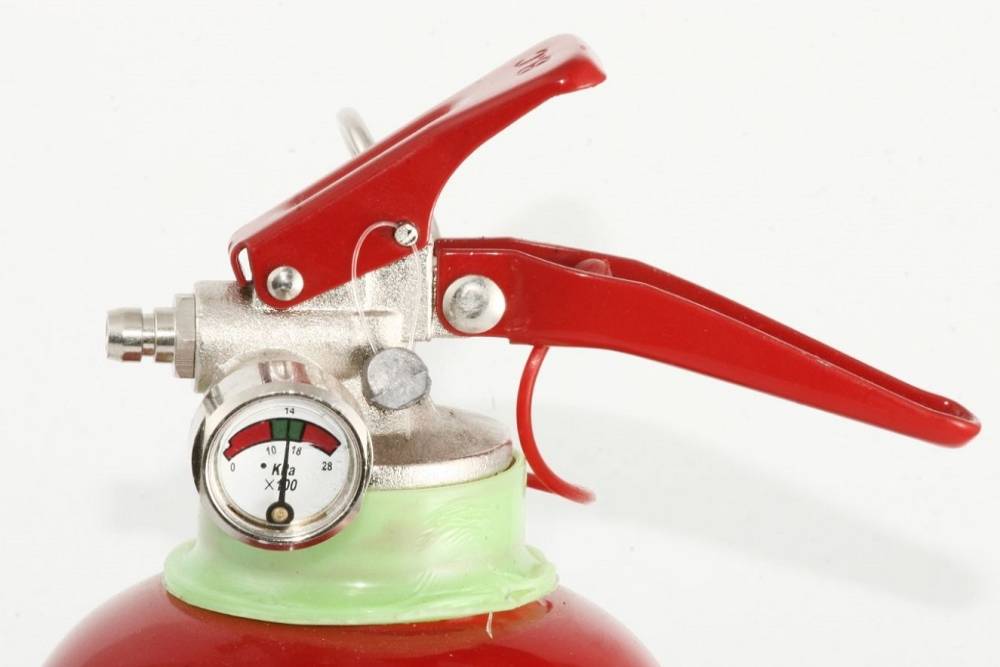Inside: What Does The Letter B On A B1 Fire Extinguisher Indicate? We find out.
Fire extinguishers, we’ve seen them on the sides of boats and in hotels and offices. You might often see more than one fire extinguisher standing side by side with another of a different shape and size.
A B1 fire extinguisher is used to put out fires, mainly liquid fires. These liquid fires include combustible liquids such as gasoline, alcohol and oil-based plants. This is very important, as liquid fires can often be some of the most difficult to put out.
If you have a pan full of chip fat and it catches fire, the worst thing you can do is simply pour water on it. This is where the B1 fire extinguisher really comes in handy.
Not only will you be able to swiftly put out your fire, but you’ll be able to make sure that it doesn’t spread or travel up the stream of your extinguisher.
So where can you find one of these fire extinguishers? What exactly does the B stand for on one of these devices?
How can you operate one of these fire extinguishers?
What other rules do you need to know when using one of these fire extinguishers? How can you avoid liquid fires before they start?
Well, if you want to know everything about a B1 fire extinguisher and more, then we would suggest that you keep reading.
We’ll cover everything that you need to know in the operation of this fire extinguisher as well as how to use it when you’re out and about. We’ll teach you safe and secure operations tactics, as well as other rules you should follow on a boat.
What Does This Mysterious Letter Mean?
The B in a B1 fire extinguisher simply indicates the class of fire that this extinguisher is designed to put out. A class B is often one that involves liquid, usually oil, chip fat or chemical fires.
There are 6 types of fires altogether, each one running from A through to F. Here is what each letter represents:
- Type A fire – This usually represents solid fires, so that’s plastic, wood, wool and fabric. The types of fire extinguishers that can be used with these fuels are water, foam, ABC dry powder and wet chemical extinguishers.
- Type B fire – this is usually liquid fires like the ones we have described above. The types of fire extinguishers that can be used on these fires are foam, CO2 gas and ABC dry powder.
- Type C fire – These are flammable gasses such as propane and butane. These types of fire extinguishers that can be used with these are only ABC dry powder.
- Type D fire – This class of fire is burning metals such as lithium and magnesium. Only dry special powder can be used to extinguish these fires.
- Electrical fires – these are fires involving electrical appliances or wiring. You should only use CO2 gas or ABC dry powder.
- Type F fire – these are oils such as cooking oil and fat. You should only put these out with a wet chemical extinguisher.
A Type B Fire Extinguisher – What Does It Do?
This type of fire extinguisher uses foam to get rid of dangerous chemical oil fires. This can often be found on boats where a chemical spill is very likely to occur.
These types of fire extinguishers are used to put out dangerous chemical spills that can quickly engulf a boat.
Does It Produce Fumes?

If you have a gas leak on your boat, then it will produce flames that are much heavier than air. These types of fumes will quickly settle to the bottom of your boat, which will hugely increase the risk of catching fire.
If you do not ventilate certain portions of your boat such as the bilge then these fumes can gradually build up, leading to an explosion event.
This will be one reason why you’ll want to install the proper safety measures in your boat.
What Does The Number 1 indicate?
The number will indicate the amount of water or extinguishing material that your fire extinguisher holds.
A B1 will have a much lower water capacity than a B2, so if you have a larger area that you’ll need to cover, we recommend getting the larger B2.
Most classes of vessel will be required by law to have a B1 or B2 fire extinguisher on board their boat. If you have an inboard engine, then you will be permitted to carry a B1 fire extinguisher on your vessel.
How Can You determine What Rating Your fire Extinguisher Is?
The top of the tag has a cross that will indicate what type of fire extinguisher that you’ll have on your boat. Below this indication will be the signature of the official who has certified that the fire extinguisher is fit for use.
These fire extinguishers will need to be checked and replaced every few months.
What Does ABC mean on a fire extinguisher?
These types of fire extinguishers are suitable for putting out classes A, B and C of fires. They contain mono-ammonium phosphate, which means that they’re suitable for putting out solid, liquid and gas fires.
What Does A Class D Fire Extinguisher Contain?
These are special fire extinguishers that you’ll need to put out metal fires. These are usually found on factory floors where metal fires most commonly occur.
These materials will burn at very high temperatures and will often react extremely negatively to water, air, carbon dioxide and other chemicals.
Where possible, you should only use a class D fire extinguisher on metal fires. You can expect an extremely negative reaction if you use a Class B fire extinguisher on a Class D fire.
Related:

